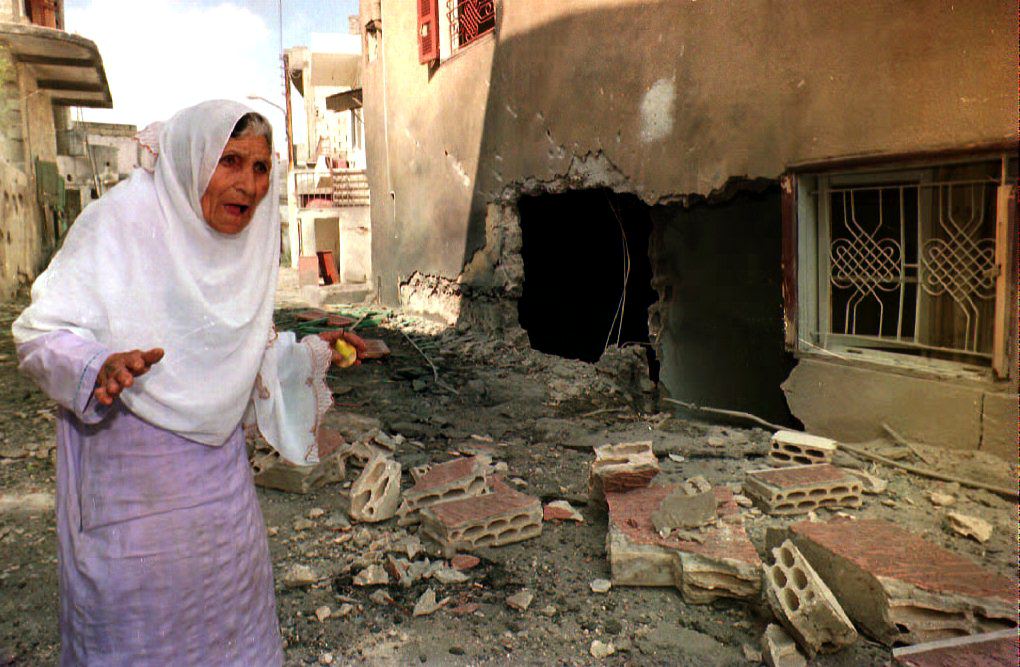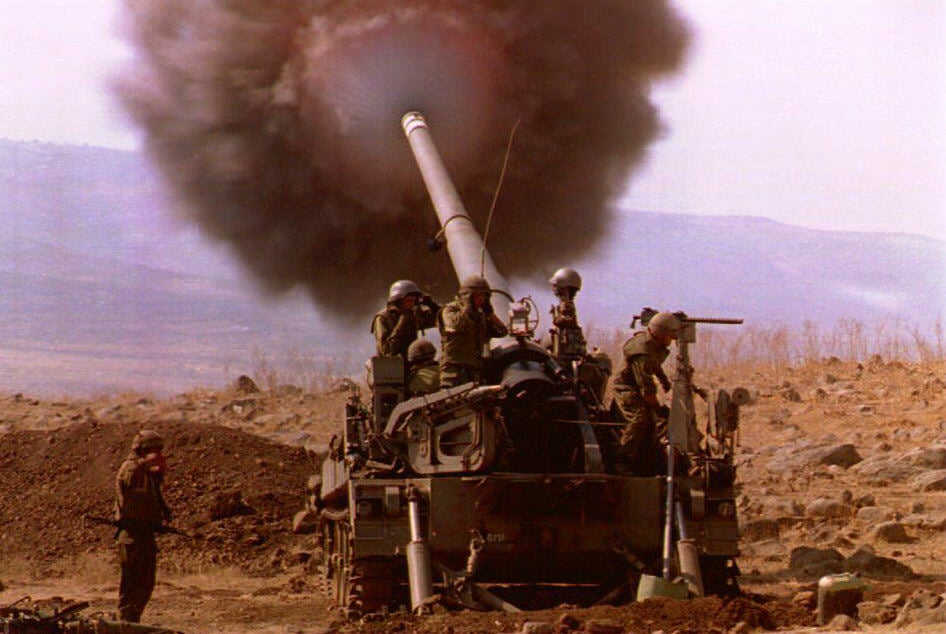Naked horror in a ‘war on terrorism’, Israel moves an armoured column into southern Lebanon
July 1993: Artillery shells destroy villages as children and elderly people lie naked and dying in hospital wards – but the atrocity continues, writes Robert Fisk


A land without people. For 20 miles we drove below the Israeli gun line yesterday, through a blitzed landscape of smashed homes and bomb-cratered roads, the sky alive with the crack of Israeli shells and the howl of fighter aircraft. Only at Sultaniyeh did a man run across the road from his house, saying: “There were 2,000 people here – now just 35 of us are hiding in my home. An Israeli plane has bombed three cars down the road. They killed a woman and two children.
A minute down the road and we found the scene, a massive hole, a spray of rubble and three Mercedes cars tossed upside down onto the powdered concrete. Terrible shapes lay inside two of them, the doors running with blood. At Jouaya, the Israelis shelled a baby clean out of its cot.
We found the three-month boy in a Sidon hospital, crying silently on a huge bed, internal bleeding in its tiny head and the word “Majhul” written on its name tag. “Unidentified”. All this, we are to believe, is to rid southern Lebanon of Israel’s latest enemy, the pro-Iranian Hezbollah who have been fighting the occupying (and pro-American) Israeli army for just over a decade. What we saw in southern Lebanon yesterday, however, was a disgrace.
Four hundred terrified villagers – old men, women and children with a smattering of youths – hiding in the basement of the Tibnin hospital scarcely half a mile in front of the guns; Shia families crowded into UN bunkers; an 80-year-old woman with almost all her skin burned off by an Israeli phosphorous shell, naked and dying in a hospital ward. How much further into horror could a “war against terrorism” go?
We listened to the reports of Israel’s proxy militia radio station, the ominous Voice of the South. No cars – not even the UN or the Red Cross – would be permitted on the roads, it announced. They would be treated as enemies. And at 7pm, the Israeli planes would return to bomb the villages again.
How fast we drove those roads, acknowledging the greetings of the few, courageous men and women who still stood in doorways, refusing to obey Israel’s orders to leave their homes.
And Hezbollah, the guerrillas, were still there. They hovered in the alleyways of Tyre, drifted in the backstreets of Qana, in a battered Volvo, even hauled a Russian-made Katyusha launcher up to the very rear of the Irish UN battalion’s Position 6-42 east of Haris and fired off three missiles towards the Israelis.
The rockets hissed over our heads. In a Tyre hospital, the local Hezbollah commander tried to explain why the “Islamic resistance” was worth so much bloodshed: “The Prophet, may his name be praised, once said that if Islam could only be saved through his death, then he wished for death.” Was this what the commander really believed?
So many shells had been fired into the centre of Tibnin that I momentarily lost my way in a village I have known for 17 years
Six Hezbollah wounded had been brought into the Jebel Amal hospital in Tyre in 48 hours, but in the past four days, 185 wounded civilians arrived, 19 of whom had died... In Sidon, I found the Red Cross placing two refrigerated lorries at each end of the city as mobile mortuaries.
There seemed no end to it. High up on the ridgeline above the Litani river we could see the puff of smoke from the Israelis’ American-made 155mm guns, the shells howling over us at five a minute. In Tibnin, “shelling sporadic” – an understatement. A few minutes later, the Israelis fired three artillery rounds just over the top of the Irish headquarters to land 50m from us as we stood in a Norwegian UN compound.
So many shells had been fired into the centre of Tibnin that I momentarily lost my way in a village I have known for 17 years; the houses blasted down, the road cratered, the electric wires hanging forlornly over a carpet of concrete and glass.

In Qana, in Siddiqin, in a dozen villages, it was the same story, whole fields laid waste by fires. A burned land as well as a land without people. The UN claims 300,000 have fled their homes which was, so Yitzhak Rabin has told us, what he intended.
In the Hammoud hospital in Sidon, bodies had been stacked outside the mortuary for lack of space. Leila Karaki from J’baa lay with 50 per cent phosphorous burns on the second floor. “The shell came right into our room. How could I leave my house? I have no money. I have my children to feed. I have nowhere to go.” In one room, I found the unknown baby alongside Mohamed Shabayta, a three-year-old Palestinian wounded in the arm by an Israeli gunboat shell as he picked a fig from a tree near his home in the Ein Helweh camp, and a seven-year-old called Hussein Qassem who lay squirming with pain on the other side of the room. Parts of his genitals had been burned away by an Israeli phosphorous shell.



Join our commenting forum
Join thought-provoking conversations, follow other Independent readers and see their replies
Comments